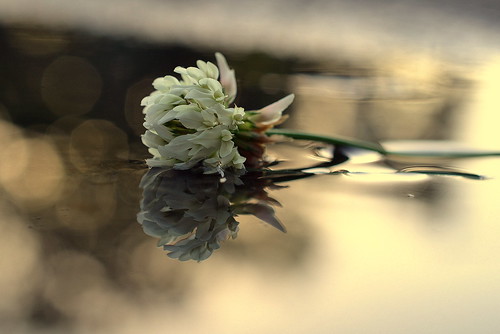August 22, 2017
Acceptance
For years, I’ve practiced letting go—letting go of old stories of shame, responsibility for the world, and wanting things to be a certain way. I’ve sat multiple silent meditation retreats, feeling sensations in my throat and heart, trying to let go, release, and receive. Just recently, I started acupuncture as a new experiment in letting go.
Last week, my acupuncturist did a front-body treatment, including a needle in my heart. She described how that heart point is where we hold our old, deep grief; grief that we think defines us. She wiggled the tip of the needle, then left the room. I cried the whole session. A good cry, where I both released and received.
Afterward, I realized that letting go has become a project for me, another way for me to push and strive: Joy, you must let go before you can be free. Yet another option—or perhaps just put a different way—is to accept. To accept my shame and grief; my vulnerability and flaws; my wanting things to be a certain way while trusting that things are just as they should be. If I accept all this, knowing that darkness helps my light shine brighter, then I’m whole. The resistance is exhausting. The acceptance opens my heart. My old stories don’t define me, but they’re part of me. They’re part of my empathy and compassion; they’re part of my bravery. I no longer want to listen to shame or fear, but I can accept they’re in the background, helping me remember what it’s like to be human.
E-Course: Coming Home to Yourself | Monthly Mindfulness + Texts | About Joy |
Guided Meditations | Facebook Page | Photography
August 1, 2017
The Importance of Teachers
 In 2010, I attended my first silent meditation retreat—a doorway to deeper practice and broader awareness. It was a big leap (scary at the time), which I’ve taken another 20 times since. Cheri Maples was my first teacher. She was no-nonsense, a straight shooter. Her dharma talks were clear, honest, and filled with abundant wisdom.
In 2010, I attended my first silent meditation retreat—a doorway to deeper practice and broader awareness. It was a big leap (scary at the time), which I’ve taken another 20 times since. Cheri Maples was my first teacher. She was no-nonsense, a straight shooter. Her dharma talks were clear, honest, and filled with abundant wisdom. I’ve sat 10 retreats led by Cheri. In that time, my practice has changed and grown immensely, and Cheri has changed, too. She transformed from a no-nonsense, former cop into a wise, kind, nurturing teacher. She applied self-compassion in her own life, leading by example. She lightened up, while still practicing with deep integrity—she lived her talk
Cheri helped me in more ways than she’ll ever know. While on her retreats, I recognized my unwholesome habit of striving (desperately “doing” to side-step my pain). I saw my identification with a victimized self—clinging to my mental story of unworthiness as an (impossible) way to control this uncontrollable life—and I began to let go; to make different choices; to be more real, vulnerable, and free. Cheri reminded us all, “If not now, when?” And she asked us to question our solid views, “Am I sure?”
Last fall, Cheri was in a horrible, life-threatening bicycle accident. For two weeks, it wasn’t clear she would live. She spent months in various kinds of rehab, where she practiced mindfulness, patience, and skillful effort. Eventually, she returned home in a wheelchair, paralyzed from the waist down. I attended a winter meditation retreat in Madison, typically co-taught by Cheri, but in which she couldn’t participate because of her health. After a silent, mindful lunch, I walked into the meditation hall and saw Cheri, in her wheelchair, on the stage. My heart leapt with love and awe.

Cheri spoke to us for 40 minutes, which took an amazing amount of energy given her condition. Her bottom line, after everything that happened: She’s grateful. She laughs more, accepts help, practices patience, and savors life. During an early juncture in her recovery, she clearly saw two roads she could take: depressed, victimized, suffering person or grateful, genuine, open-hearted person. She chose the latter, with dignity and grace. On that day in February, she was my teacher in new and beautiful ways.
Last week, Cheri got a systemic infection and died within hours. It shocked everyone around her, but didn’t appear to shock Cheri. She understands—in ways very few of us do—that life is fleeting, ever-changing, and not to be taken for granted, even for a moment. The day before she died, she told a friend, “I have lived such a good life.” A teacher until her last breath.
I feel deep sadness. Personal grief as well as heartbreak for the world. We’ve lost a great teacher, a mindful social activist, and a beautiful person. (For a sample of Cheri's wise, compassionate, honest teaching, look here.) A world-wide community mourns. Still, I know where Cheri would invite me to turn my attention: Gratitude. I’m grateful for each bit of wisdom I received from Cheri. I’m grateful for her example of how to live life, especially when it’s hard. I’m grateful I took a chance on that retreat in 2010. It changed my life. Cheri changed my life. I miss her steady presence in this unpredictable world. And I carry her in my heart: a reminder that steadiness is within me, too.
E-Course: Coming Home to Yourself | Monthly Mindfulness + Texts | About Joy |
Guided Meditations | Facebook Page | Photography
July 19, 2017
Back to Basics

Meditation isn't just time spent on the cushion. It's equally about bringing awareness to daily life. At the Y, I bookend my meditation class with suggestions for everyday awareness. Speech and relationships are rich places to pay attention. I pose these questions about speech: Is it truthful? Helpful? Kind? (And is this the right time and am I the right person?) These are deep questions. So much of our cultural chatter is unhelpful, untrue, and unkind. It makes a difference when we attend with care to what we say. The more years I meditate, the less I speak.
My friend Peter took these questions to heart and wrote a lovely song about skillful speech. When he shared it with a neighbor, he got this response: "Isn't that too simplistic? It sounds like kindergarten." This exchange made me wonder: perhaps all we need are basic lessons learned in elementary school.
I recently met with a group of educators of young children. The preschool director said, "Many days, we don't get into curriculum because we're helping kids resolve conflict. We let them know it's okay to disagree but they must treat each other with kindness and respect." Wisdom from preschool. If we all practiced this, our world might heal.

Karen Maezen Miller is a meditation teacher who resurrected a Zen garden in her backyard years ago. Now people flock to her house for garden tours. Her basic rules: 1) Be kind; 2) Don't throw rocks; 3) No running; 4) Pay attention. Ostensibly, these rules apply to young children, but if we overlay them on our adult lives, they're wonderful instructions.
We spend so much time in our thoughts. Thinking, judging, analyzing, planning, and replaying. In doing so, we can over-complicate life. We blame (throw rocks), busy ourselves, and speak unconsciously. We see life as a puzzle to solve rather than a mystery to be lived, moment by moment, with our whole being. Our way back home is through simple lessons we learned as kids:
Slow down.
Pay attention.
Be kind.
Tell the truth.
Apologize.
Get outside.
Take quiet time.
Help each other.
Back to basics. We don't need much more than this. Simplicity is a beautiful thing. We can practice awareness with the next breath:
E-Course: Coming Home to Yourself | Monthly Mindfulness + Texts | About Joy |
Guided Meditations | Facebook Page | Photography
July 11, 2017
Wholehearted Living
 In my prison sangha, there are a variety of men—young and old; tough and tender; expressive and quiet. One of our quiet leaders is a burly guy with a shaved head. No one messes with him. Yet I know he’s a kind soul who had an amazingly difficult childhood. He practices meditation diligently. His heart continues to open in new ways. He shows up every week and sits in the circle.
In my prison sangha, there are a variety of men—young and old; tough and tender; expressive and quiet. One of our quiet leaders is a burly guy with a shaved head. No one messes with him. Yet I know he’s a kind soul who had an amazingly difficult childhood. He practices meditation diligently. His heart continues to open in new ways. He shows up every week and sits in the circle.During a one-on-one visit, another teacher and I shared with our “big, tough guy” exactly how and why we value his wisdom, presence, and practice. We let him know we care. He paused and the tears came, rolling down his cheeks. I asked, “Are these tears because no one has told you this before or because you don’t feel worthy?” He quietly nodded, “It’s both.”
This powerful interaction touched me in two ways: It was a reminder to tell people why and how I love them—to not hold back these words—because it makes a difference; it was also a reminder of our western-culture core wound: a deep-seated feeling of unworthiness.
It’s a life-long practice to build awareness, understand ourselves, and bear witness to our own pain; to apply self-compassion. It begins when others see us—really see us, as is—and accept us without conditions. It continues when we do this for ourselves.
Brené Brown writes, “Wholehearted living is about engaging in our lives from a place of worthiness. It means cultivating the courage, compassion, and connection to wake up in the morning and think, No matter what gets done and how much is left undone, I am enough. It’s going to bed at night thinking, Yes, I am imperfect and vulnerable and sometimes afraid, but that doesn’t change the truth that I am also brave and worthy of love and belonging.”
May we all live and breathe in a more wholehearted way.
E-Course: Coming Home to Yourself | Monthly Mindfulness + Texts | About Joy |
Guided Meditations | Facebook Page | Photography
June 28, 2017
Mindfulness Practices for Work

When I teach mindfulness courses, my students often say, “I feel present and aware when I’m here with you, but I lose myself at work. How can I stay mindful in a busy work environment?” This is a great question, whether our work is done in cubicles, at home, inside classrooms, a studio, or within volunteer organizations. It’s easy to “lose ourselves”: to forget our breath, body, and awareness; to get caught in busyness. Yet we can remember in small, regular ways. With practice, we can return to mindfulness.
Change your perspective.
If you feel sluggish, scattered, stuck, or anxious, change your position. If you’re seated, stand up. If you’re standing, sit down. Take a short walk. Look out a window or, even better, get outside. Sit on a chair in a different room. Twirl or dance. Make a conscious choice to change your perspective. New ideas often arise in the shower, walking to the bathroom, or during an afternoon workout. We need breaks from the overthinking; we need space for creativity. Physically change your position, take a few deep breaths, and try to see the world anew.
Connect in person.
We’re constantly connected through technology. We ask questions via chat clients, email, or text. But complicated questions are asked and answered best in person. One email message can generate an hour’s work, when a phone call completes the task in ten minutes. The way we communicate makes a difference. Connecting in person helps reduce workload and strengthens relationships. The next time you have a non-trivial question, pick up the phone or walk to the person’s office. Engage with each other.
Do something kind.
Life can be difficult and work can be challenging. Our brains have a negativity bias that we must consciously tilt back. If you feel frustrated, disappointed, or just need a break, start looking for the good in people. Compliment a coworker. Give a genuine thank you. Tell someone’s boss what you appreciate about the person. Get coffee for your team. Write an inspirational message on a whiteboard. Listen deeply to a colleague. Do some small act of kindness.
Regular pauses throughout the day help us stay focused, aware, and more at ease. The busier we are, the harder it is to pause, yet it's vital for our well-being and our productivity. Take these pauses: notice your breath and body. And be willing to begin again and again.
E-Course: Coming Home to Yourself | Monthly Mindfulness | About Joy |
Guided Meditations | Facebook Page | Photography
Regular pauses throughout the day help us stay focused, aware, and more at ease. The busier we are, the harder it is to pause, yet it's vital for our well-being and our productivity. Take these pauses: notice your breath and body. And be willing to begin again and again.
E-Course: Coming Home to Yourself | Monthly Mindfulness | About Joy |
Guided Meditations | Facebook Page | Photography
June 22, 2017
Holding Opposites Within Us
 Life is complex. It's not just one thing; it's many things all at once. Part of my meditation practice is making room for everything. I've noticed how opposites arise together: love and sadness; fear and freedom; grief and wonder. When I love from an unguarded heart, I open myself to loss. When I experience fear but move through it, I feel freedom and ease. When I'm cracked open with grief, I see the world anew.
Life is complex. It's not just one thing; it's many things all at once. Part of my meditation practice is making room for everything. I've noticed how opposites arise together: love and sadness; fear and freedom; grief and wonder. When I love from an unguarded heart, I open myself to loss. When I experience fear but move through it, I feel freedom and ease. When I'm cracked open with grief, I see the world anew.Our well-grooved habit is to resist painful feelings and cling tightly to what's pleasant. This creates tension in our bodies and minds. Elizabeth Lesser wisely notes, "How strange that the nature of life is change, yet the nature of human beings is to resist change. And how ironic that the difficult times we fear might ruin us are the very ones that can break us open and help us blossom into who we were meant to be."
It's possible to hold these opposite within us. Hold them lightly, with spacious curiosity. Opening our heart-minds in both directions allows us to more fully inhabit this ever-changing life. We have far more capacity than we realize. Building awareness takes persistence and patience, but it's possible. You can start right now:
E-Course: Coming Home to Yourself | Monthly Mindfulness | About Joy |
Guided Meditations | Facebook Page | Photography
June 15, 2017
End of the Day
 Evening comes. The day is done. If I stay aware, I do something that settles and nourishes. If I'm distracted, I often do something that overstimulates and depletes. (This is a life-long practice.) Either way, I'm met with thoughts as I lie down to bed. When I follow my thoughts in their endless loops, I stay awake. When I transform my thoughts, from blah-blah storylines to heartfelt gratitude, or when I move away from thoughts and gently into my body and breath, I fall asleep. Letting go at day's end is a powerful practice. Letting go of things undone or plans for tomorrow; letting go of tension, bit by bit; letting go of the copious methods we use to control the uncontrollable.
Evening comes. The day is done. If I stay aware, I do something that settles and nourishes. If I'm distracted, I often do something that overstimulates and depletes. (This is a life-long practice.) Either way, I'm met with thoughts as I lie down to bed. When I follow my thoughts in their endless loops, I stay awake. When I transform my thoughts, from blah-blah storylines to heartfelt gratitude, or when I move away from thoughts and gently into my body and breath, I fall asleep. Letting go at day's end is a powerful practice. Letting go of things undone or plans for tomorrow; letting go of tension, bit by bit; letting go of the copious methods we use to control the uncontrollable.Short, regular pauses throughout the day—connecting with body, breath, and awareness—help us rest and sleep more easily. But we don't always remember and life interrupts. Whenever you feel anxious or unsettled at day's end, come here—to this post—and listen:
--
E-Course: Coming Home to Yourself | Monthly Mindfulness | About Joy |
Guided Meditations | Facebook Page | Photography
Subscribe to:
Posts (Atom)

